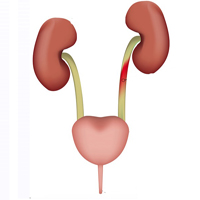Epidemiology and antibiotic resistance in community-acquired lower urinary tract infections in the Milan area

Published: 5 August 2020
Abstract Views: 917
PDF: 451
HTML: 40
HTML: 40
Publisher's note
All claims expressed in this article are solely those of the authors and do not necessarily represent those of their affiliated organizations, or those of the publisher, the editors and the reviewers. Any product that may be evaluated in this article or claim that may be made by its manufacturer is not guaranteed or endorsed by the publisher.
All claims expressed in this article are solely those of the authors and do not necessarily represent those of their affiliated organizations, or those of the publisher, the editors and the reviewers. Any product that may be evaluated in this article or claim that may be made by its manufacturer is not guaranteed or endorsed by the publisher.
Similar Articles
- Elif Bozcal, Distribution and virulence properties of extra-intestinal pathogenic Escherichia coli in Turkey , Microbiologia Medica: Vol. 31 No. 4 (2016)
- Elisabetta Maioli, Roberto Bandettini, Rosalba Bona, Luigi Carlo Bottaro, Roberto Capuzzo, Maria Dono, Pier Andrea Dusi, Maria Gabriella Mazzarello, Silvia Reali, Luisa Santoriello, Domizio Serra, David Usiglio, Anna Marchese, Eugenio A. Debbia, Epidemiological study on distribution and antibiotic susceptibility patterns of Enterobacteriaceae and non-fermenting bacteria, isolated in Liguria and in a neighbouring area , Microbiologia Medica: Vol. 23 No. 2 (2008)
- Sara Marani, Maria Federica Pedna, Evaluation of the HB&L carbapenemase and extended spectrum beta lactamase-AmpC automated screening kits for the rapid detection of resistant Enterobacteriaceae in rectal swabs , Microbiologia Medica: Vol. 32 No. 1 (2017)
- Utibeima Udo Essiet, Abraham Ajayi, Adeyemi Isaac Adeleye, Stella Ifeanyi Smith, Effect of selected disinfectants on biofilm-forming clinical isolates of Staphylococcus aureus in Lagos State, Nigeria , Microbiologia Medica: Vol. 38 No. 2 (2023)
You may also start an advanced similarity search for this article.

 https://doi.org/10.4081/mm.2020.9269
https://doi.org/10.4081/mm.2020.9269



